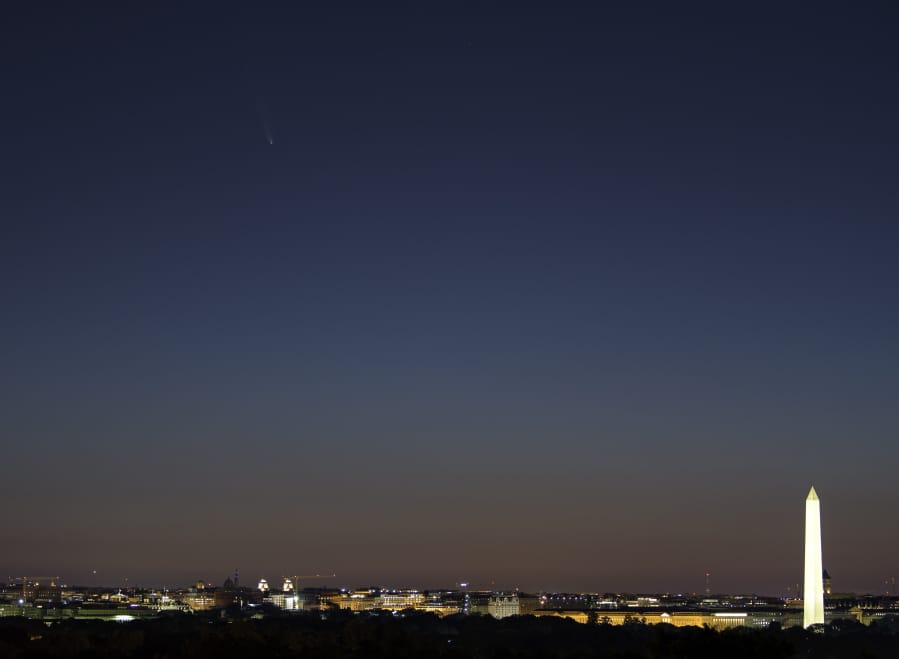Sorry to be slightly late with this story, but better that than 6,800 years from now.
That’s the next time a comet with the unlikely nickname Neowise will approach our planet. Neowise has been visible to the unaided eye in the northwest sky for the past week or so. By the time you read this, the rocky ice ball will actually be passing quite close to the Earth — in astronomical terms, that is — at 64 million miles away. Yet it might also prove harder to see.
Comets are like cats, astronomers are fond of saying: fascinating yet unpredictable. The worst-case scenario for skywatchers is that Neowise (real name C/2020 F3) simply disintegrates and disappears just in time for your attempt at viewing.
The best-case scenario is astronomically unlikely, according to Scientific American magazine: Heated by the sun, Neowise explodes in the kind of bright, history-making burst that used to terrify our ancestors. (Best-case for skywatchers but bad for the comet, that is.)
What’s probable is in between, according to Jim Todd, the space science director at the Oregon Museum of Science and Industry: As it heads back to the outer limits of the solar system, the comet will get dimmer while appearing higher over the northwestern horizon each night. It probably won’t disintegrate. NASA images show “a healthy-looking comet displaying an impressive fan-shaped tail,” Todd said. Its nucleus is about 3 miles in diameter and covered with dark particles left over from the formation of the solar system around 4.6 billion years ago.
To see Neowise, head for an open patch of ground at least one hour after sunset. (My local high school athletic field has served perfectly.) Look to the north-northwest, directly below the Big Dipper.
The comet is that faint star sending a ghostly trail diagonally upwards to the east.
To avoid being underwhelmed, binoculars are highly recommended. The darker the sky, the brighter your view, so be patient.
Neowise was only discovered in March, and nicknamed after the space probe that spotted it: the Near Earth Object Wide-Field Infrared Survey Explorer. This year, scientists also had their eyes on two other comet visitors to our solar neighborhood that did disintegrate and disappear. That’s how unpredictable comets can be.
Planets and moons
Here’s another view that won’t underwhelm and might just last all summer long. Jupiter, by far the hugest of our solar system’s planets, passed its point of opposition — its closest approach to Earth at 385 million miles away — just last week. It’ll remain big and bright in the sky throughout the summer, Todd said. When you get tired of peering at that relatively dim comet, rotate all the way around to find what looks like the brightest star in the southeastern sky.
That’s Jupiter. Its smaller neighbor to the left is Saturn. Both will rise at sunset and remain visible all night long.
Here’s why you want binoculars: They might just reveal Io, Europa, Ganymede and Callisto, Jupiter’s four largest moons, clustered around the planet. With really powerful binoculars and a tripod to prevent vibration, Todd said, you might even be able to see Jupiter’s colorful bands and Great Red Spot as well as Saturn’s rings and largest moon, Titan.
“They’ll both be putting on a show this summer, those two planets,” Todd said. “They’ll be easy for the eye to see and easy to recognize.”




